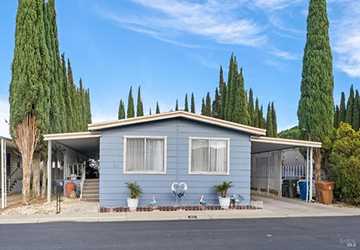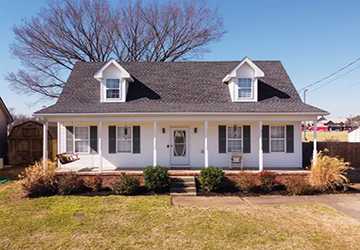Whether your move is professional, a home upgrade, or a property investment leaning, converting your primary residence into a rental property requires careful planning. This guide is designed to walk you through the critical steps of converting your home into a rental property and provide insights into preparing your property for rental.

Lay the foundation.
Converting your space to a rental space requires more than just attracting tenants. From dealing with the intricacies of legal issues to increasing the curb appeal of your property, every stage is critical to a smooth transition.
Legal and tax considerations
Starting a business requires a strong understanding of legal and financial aspects. Changing from homeowner to landlord may affect your tax liability and require purchasing landlord insurance. Understand your region's legal and regulatory frameworks, as these vary from region to region.
Steps to convert your home into a rental property.
Converting your property into the rental realm requires a series of intentional actions. Here are the basic steps to transform your home into a rental property:
1. Market Analysis: Gain an in-depth understanding of the local rental market to identify competitive and profitable rentals.
2. Property Improvements: Keep your property in top condition to attract and retain valuable tenants.
3. Insurance transition: The transition from home contents insurance to landlord insurance is critical.
4. Understand the legal framework: Understand your area's landlord and rental laws to strengthen your legal position.
5. Leasing Infrastructure: Develop tenant acquisition strategy, review process, rent collection and maintenance protocols.
How to Prepare a Rental Property
There's more to your property's rental readiness than just cosmetic adjustments. Below, you'll learn how to prepare a rental property sensitively:
●Safety first: Determine the operational integrity of safety devices such as smoke and carbon monoxide detectors.
●Renovations and extensions: Make necessary repairs and consider aesthetic improvements to increase the appeal of your property.
●Thorough Cleaning: The appeal of a spotless property cannot be overstated. Hiring a professional cleaning service can result in a perfect environment.
●Property Staging: Property staging is optional, but it can help potential tenants envision the space as their future home.
Financial strategy development
Financial foresight is crucial when converting a primary residence into a rental property. Setting aside funds for unforeseen repairs is vital, as is understanding the tax implications and pricing your rent appropriately. To navigate these waters, it is recommended to consult a financial expert.
Tenant acquisition
The cornerstone of leasing success is attracting trustworthy tenants. Implement a rigorous verification process and evaluate your credibility, professional background, and references. A well-drafted lease agreement is crucial to make the terms of the lease clear.
Maintenance and supervision
After leasing, the focus is on maintenance and competent property management. Whether you oversee it yourself or delegate it to a property manager, quickly handling repairs and tenant requests is critical to a successful tenancy.
Improving your property's rental transition: Beyond the basic steps. Transforming your home into the ideal rental property is more than just the initial stages of preparation and compliance with legal requirements.

Unleash the full potential of your property.
Breakthrough improvements are more attractive.
●Smart home system integration: Utilize state-of-the-art technologies such as adaptive thermostats, intelligent access control systems, and energy-saving lighting. These modern facilities attract a digitally savvy crowd and promote sustainable living.
●Innovation for sustainable living: Develop environmentally friendly businesses by integrating photovoltaic systems, rainwater harvesting systems and energy-saving appliances. These initiatives will significantly increase the attractiveness of your property while promoting environmental protection.
Build endurance with elegance.
●High-traffic flooring solutions: Invest in long-lasting, low-maintenance surface solutions, such as high-quality vinyl plank or tile that combines beauty with durability.
●Tranquil Palette: Choose muted tones and finishes to create a warm and eclectic environment, allowing residents to add their personality to the space.
tax improvements and expansions.
Clever pricing strategy
● Adaptive pricing models: Utilize analytical tools and software to dynamically change lease rates, tailored to demand fluctuations and seasonal fluctuations, to optimize your financial returns.
Portfolio Diversification
● Diversity of Property Selection: Expand your property collection by exploring different property types, such as single-family homes, condos, and vacation rentals, to expand your income channels and reduce financial risk.
Maintain deep-rooted tenant relationships.
Promote community and support.
●Tips for first-time renters: Make a memorable first impression with a welcome kit with a city guide, important contact information and thoughtful tokens.
●Consistent engagement and communication: Maintain transparent communication channels and engage with tenants regularly to foster a sense of belonging and attentive care.
Proactive maintenance and quick resolution
●Preventative Maintenance Plan: Develop a systematic maintenance plan to prevent potential problems, ensure resident satisfaction, and protect property condition.
●Immediate resolution framework: Develop a dedicated team or mechanism to resolve maintenance requests and reduce tenant inconvenience quickly.
Use technology solutions to optimize processes.
Digital operation and management
● Digital Tenant Gateway: Introducing digital mechanisms for rent payments, service requests and contract renewals to provide greater convenience for property managers and residents.
Advertising and discoverability
●Digital presentation and marketing expertise: Leverage high-quality virtual presentations across multiple platforms and a robust digital footprint to attract potential tenants.
Explore Niches: Meet Unique Tenant Needs
Develop niche markets to gain unique appeal.
●Design for Demographics: Tailor your property to a specific group, such as assisting remote workers, pet owners, or families by offering dedicated workspaces, pet-friendly amenities, or child safety features.
●Themed indoor and outdoor spaces: Incorporate a unique theme or design element that resonates with your target audience, such as eco-friendly materials for eco-friendly enthusiasts or a state-of-the-art kitchen for cooking enthusiasts.
Create an experience rental.
●Lifestyle Amenities: Incorporate amenities that enhance the living experience, such as community gardens, fitness centers or shared recreational spaces to promote community and well-being.
●Local Partners and Benefits: Establish partnerships with local businesses to provide tenants exclusive offers or services, enriching the rental experience and integrating your property into the local fabric.
Conclusion
Converting a primary residence to a rental property and preparing a rental property requires careful planning and flexible execution. By following the steps for converting your home to a rental property, you can make the transition safely. Customize these guides to your unique property and goals.



